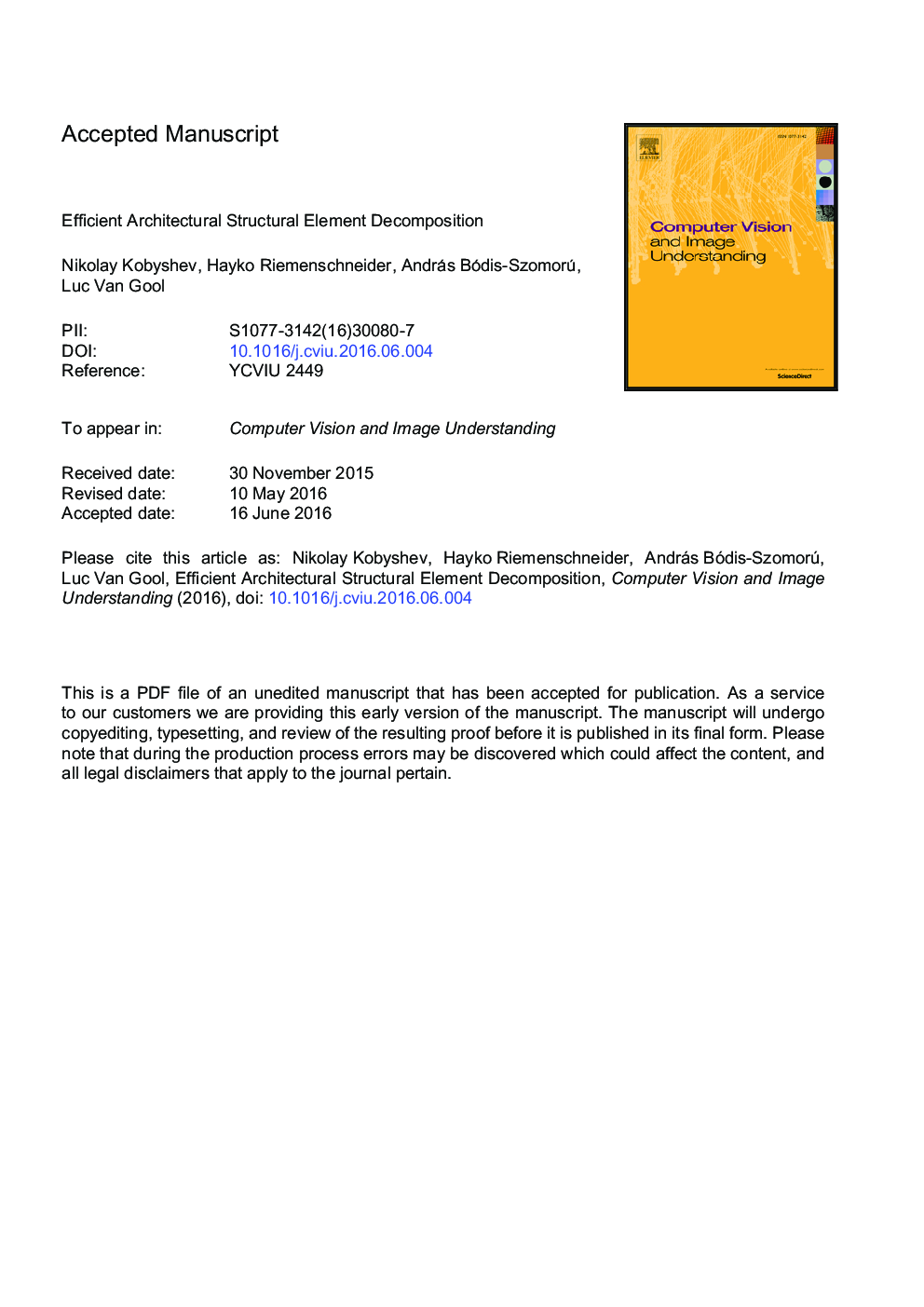| Article ID | Journal | Published Year | Pages | File Type |
|---|---|---|---|---|
| 4968779 | Computer Vision and Image Understanding | 2017 | 17 Pages |
Abstract
Decomposing 3D building models into architectural elements is an essential step in understanding their 3D structure. Although we focus on landmark buildings, our approach generalizes to arbitrary 3D objects. We formulate the decomposition as a multi-label optimization that identifies individual elements of a landmark. This allows our system to cope with noisy, incomplete, outlier-contaminated 3D point clouds. We detect four types of structural cues, namely dominant mirror symmetries, rotational symmetries, shape primitives, and polylines capturing free-form shapes of the landmark not explained by symmetry. Our novel method combine these cues enables modeling the variability present in complex 3D models, and robustly decomposing them into architectural structural elements. Our proposed architectural decomposition facilitates significant 3D model compression and shape-specific modeling.
Related Topics
Physical Sciences and Engineering
Computer Science
Computer Vision and Pattern Recognition
Authors
Nikolay Kobyshev, Hayko Riemenschneider, András Bódis-Szomorú, Luc Van Gool,
